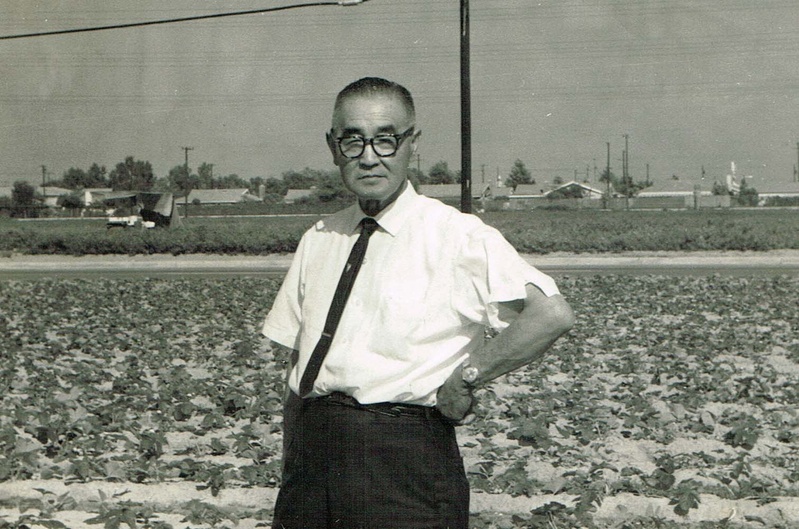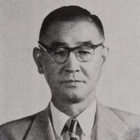I want to spend my final days in Japan
During his second stay in America, Kato Shinichi compiled "A Centennial History of Japanese Americans in the United States" in 1961 as editor-in-chief of the New Japan America Newspaper Company, before leaving the company and returning to Japan in 1970. Looking back, Kato was born in Hiroshima in 1900, and was called to California by his father at the age of 18. He returned to Japan just after the outbreak of war between Japan and the United States, moved to the United States again in 1953, and returned to Japan again in 1970. His life consisted of two round trips between Japan and the United States.
His only son works at the Bank of Tokyo in Los Angeles, and his grandson is also an American born in the United States. However, apart from a nephew, he has no other close relatives in Japan. Why did he return to Japan? According to his nephew, Junji Yoshida, his true feelings were that he "wanted to spend his final days in Japan."
Kato worked as a farmer in California in his youth, eventually becoming a reporter and editor for a Japanese-language newspaper, and after the war even driving around the country visiting Issei. He was so well integrated into American society, however, it seems he has decided that his "place to die" is his hometown of Hiroshima.
Tracing Kato's footsteps up to that point, we can see two major themes in his life that he was passionate about. One was "American immigration," which he became obsessed with after living in America as a Japanese immigrant. The other was "the desire for peace," which was born from his experience of the atomic bombing and losing his younger siblings.
After visiting the Issei in America and compiling his records, Kato returned to Japan at the age of 70 and began to actively work on issues related to peace and immigration. Although his main focus was on the peace movement, I will summarize this later in his career as part of his later years. First, I would like to introduce Kato's activities in the area of issues related to immigration from Hiroshima to America.
Kato had been involved in creating newspaper pages for many years as a journalist, and his name appeared as one of the subjects of an article titled "'Hiroshima North American Club' soon to be established" in the January 22, 1972 edition of the local Chugoku Shimbun newspaper. To facilitate smooth exchanges between Hiroshima natives who had immigrated to North America and their hometown of Hiroshima, an organization called the "Hiroshima North American Club" was established in Hiroshima, and Kato's name was listed as the representative founder of the organization.
We have mentioned before that Hiroshima Prefecture is one of the leading emigrant prefectures in Japan, and according to a summary of the special exhibition "From Hiroshima to the World" by the JICA Yokohama Overseas Migration Museum in 2017, a total of about 110,000 people emigrated from Hiroshima Prefecture before and after the war to Hawaii and other North and South American destinations. The number of emigrated was 109,893, the highest in the nation, followed by Okinawa (89,424 people), Kumamoto (76,082 people), Yamaguchi (57,837 people), and Fukuoka (57,684 people).
Helping Hiroshima from overseas
Even though they left Japan, Japanese people who went abroad still had a strong attachment to their hometowns, and Hiroshima Prefecture people seemed to be particularly conscious of this. This is deeply connected to the war and the atomic bomb. Upon learning that their hometowns had suffered the atomic bombing and were in poverty, Hiroshima Prefecture associations in North and South America sent large amounts of relief money to Hiroshima.
The Southern California Hiroshima Prefectural Association in Los Angeles, where Kato lived, sent 4 million yen, which was used to build a children's library in Hiroshima City.
According to the "Spring 2017 Newsletter from the Hiroshima Overseas Migration Museum," "28 local Hiroshima Prefectural Associations have been organized in nine countries, including Hawaii, North America, and Central and South America," and "Hiroshima Prefecture carries out a variety of exchange programs, such as sending delegations to commemorative events hosted by the Hiroshima Prefectural Associations, which are an important network overseas, and inviting prefectural associations to Hiroshima."
Of these 28 regions, there are 12 Hiroshima Kenjinkai in the mainland United States, four in Hawaii, two in Canada, one each in Mexico and the Dominican Republic in Central America, and two each in Brazil, Argentina, and Paraguay in South America, as well as one each in Peru and Bolivia.
The oldest of these is the San Francisco Hiroshima Japanese Association on the American mainland, founded in January 1898, followed by the Seattle Hiroshima Club in January 1901 and the Sacramento Hiroshima Japanese Association in 1906. Their history stretches back more than a century.
A conduit between immigrants and their hometowns
As you can see, Hiroshima people living overseas were very united, but the newspaper article from January 1972 mentioned above begins:
Hiroshima is an immigrant prefecture. However, when local people or groups return to their hometowns, they have no way of contacting each other. When they return, they just wander around, and local people living in the US have complained about the lack of a connection. In response to this demand, the Hiroshima North American Club will be established on the 26th on a completely private basis. Of course, the main aim is to act as a connection between these people and their hometowns, but the organizers say, "The era of immigration is over. We want to be a mutual contact for trade and other purposes in preparation for the age of globalization," and are aiming for a wide range of activities.
According to the article below, the Hiroshima Prefectural Trade Association is preparing to launch this club, and the secretariat will be located within the association. The members who will participate in the club are individuals who had previously lived in the United States, but had returned to Japan and moved to Hiroshima Prefecture at the time, and who receive monthly remittances of 30,000 to 60,000 yen from the United States, including pensions, through the Sumitomo Bank Hiroshima Branch and the Bank of Tokyo Hiroshima Branch. In addition to individuals, 40 trading companies in Hiroshima Prefecture will also join as members.
Based on this information, it seems likely that Kato has also received some sort of remittance from the U.S. In the article, Kato's name is the only one mentioned as a promoter of the club's launch, so it is safe to assume that Kato is at the center of this club.
By the way, Kato's title in the article is Chairman of the World Federation Hiroshima Prefectural Council. Please remember that in November 1952, when the World Federation Asia Conference was held in Hiroshima, Kato served as Secretary General. Immediately after that, he returned to the United States and worked for the New Japan-America Newspaper Company in Los Angeles, but after returning to Japan in 1970, he immediately devoted himself to peace-related movements such as the World Federation.
In August 1970, the 25th anniversary of the atomic bombing, the Second World Federation of Religious Conference for Promoting Peace was held in Hiroshima. Kato served as the Deputy Secretary General of the conference. It may have been for this conference that Kato decided to return to Japan. From his return, Kato became actively involved in the peace movement until the end.
(Titles omitted)
© 2021 Ryusuke Kawai







